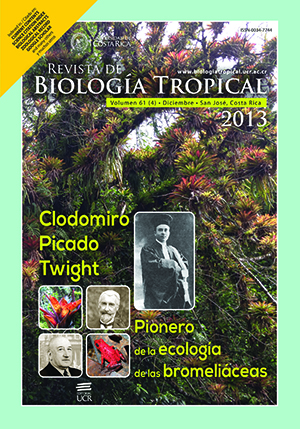Resumen
Eustrombus gigas es uno de los recursos pesqueros costeros más valiosos en la región del Caribe y constituye un molusco con un elevado valor estético y ecológico. En esta investigación se evalúa su densidad total, densidad de adultos, la estructura de tallas y frecuencia de evidencias reproductivas en Banco Chinchorro, México, periodo 2009-2010; durante tres períodos (de lluvias, seca y de frentes fríos) en tres zonas: Norte, Centro y Sur. La densidad total para el área de estudio varió de 127ind./ha en lluvias a 384ind./ha en seca, la menor densidad se presentó en la zona Norte del Banco (198ind./ha) y la mayor en la zona Sur (385ind./ha). La densidad de caracoles adultos fue baja (6.11ind./ha en seca y 8.33ind./ha en lluvias y 5.55, 7.05 y 8.33ind./ha para las zonas Centro, Sur y Norte, respectivamente). Las densidades de adultos estuvieron por debajo del umbral mínimo necesario para mantener la reproducción. El 42% de la población es vulnerable a la pesca (Lsi≥200mm); sin embargo, solo 2.2% de la población alcanza un Gl>15mm. Solo se observaron seis evidencias de reproducción durante el período de estudio, lo que señala la presencia del efecto Allee en la población y la urgente necesidad del cierre de su pesquería. Se proponen tres puntos importantes para el manejo de la especie: cierre de la pesca, monitoreo de la población y la implementación refugios pesqueros.Descargas
Los datos de descargas todavía no están disponibles.

